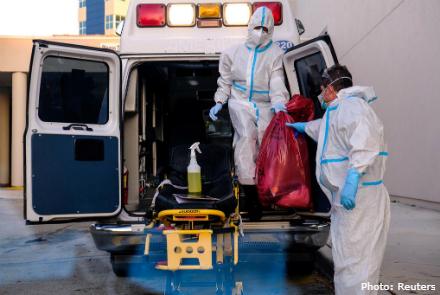A new report by a US watchdog says the coronavirus pandemic is pushing millions more Afghans into poverty, overwhelming the country's basic healthcare system and causing food shortages while the country lacks the required medical equipment to treat patients diagnosed with the viral disease.
The report by the Special Inspector General for Afghanistan Reconstruction (SIGAR) published on Thursday says that only 300 ventilators were currently available across the country, with a severe shortage of oxygen supply in the capital.
The watchdog warns that Afghanistan was “headed for a humanitarian disaster” as the virus continues to spread.
“The economic shock of the pandemic, including increased unemployment, food-supply disruptions due to border closures, and rising food prices, has exacerbated Afghans' food insecurity, already impacted by the ongoing conflict and high poverty levels,” said SIGAR.
So far, the Ministry of Public Health has reported at least 37,000 new COVID-19 cases and over 1,270 deaths.
The report says that Afghanistan had likely entered a recession because of the pandemic, with the economy projected to shrink 3 to 10 percent in 2020.
It added that about one-third of the country's estimated 32.2 million people were either in a crisis or an emergency state of food insecurity.
“Experts predict that an additional eight million people will fall into poverty, pushing the poverty rate from 55 percent to 80 percent,” the report said.
The report says that testing remains limited, but nearly 43% of samples test positive, one of the highest rates in the world.
To prevent the spread of COVID-19, the Afghan government extended school closures until at least September 2020, threatening to halt fragile gains in Afghanistan’s education outcomes.
This comes as the Afghan government removed lockdowns in cities last month, but the schools and universities are scheduled to reopen this week.


